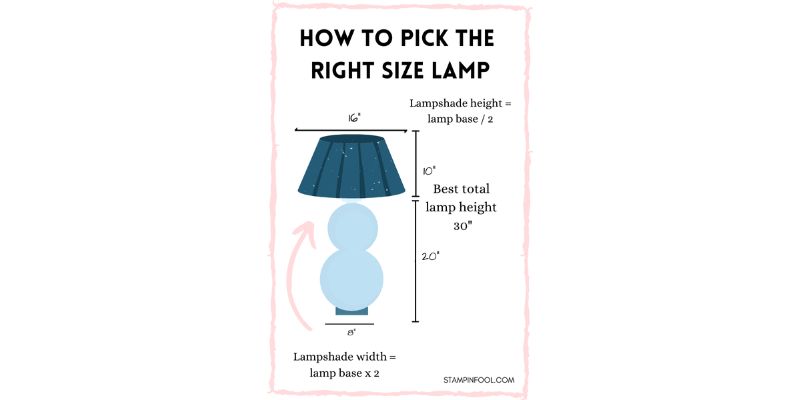Several considerations should be taken into account when deciding on the appropriate light size for a given space. Lighting is essential for setting the mood, improving the usability of a place, and injecting some flair. It’s important to select a lamp whose size is proportional to the room’s dimensions and design scheme. In this detailed manual, we’ll explain all the key factors to think about “How Do I Choose the Right Size of Lamp for My Room?” and provide you expert advice for making the best choice possible.
How Do I Choose the Right Size of Lamp for My Room?
Getting a feel for the room’s dimensions is the first step before getting into the nitty-gritty. Your lamp’s proportions should be in keeping with the scale of the room, the height of the ceiling, and the arrangement of the furnishings. If the lamp is too big or too little for the room, the proportions are off and it feels unwelcoming.
How to Measure a Lamp’s Height
When picking a lamp, its height should be among your top priorities. The purpose and location of the lamp are what should be used to decide its height. If you’re having trouble deciding how high to hang your lamp, consider these tips.
Table Lamps
Lamps on tables are a common choice for both functional lighting and aesthetic flourishes. A table lamp’s height should be appropriate for the table or surface it will be used with. When sitting close to a lamp, your eyes should be at the same level as the bottom of the shade. The result is a well-lit area that can be used for a variety of purposes.
Floor Lamps
Floor lamps can be used as general lighting or to highlight certain areas of a room. A floor lamp’s optimal height is determined by the task at hand. A taller floor lamp can illuminate a wider area, making it ideal for ambient lighting. A shorter floor lamp with an adjustable arm or shade is preferable for task illumination such as reading or emphasizing specific things.
Pendants and Chandeliers Lamps
Light fixtures such as pendants and chandeliers are frequently employed as design accents because of the refined air they exude. Think about the ceiling height while making your choice between a pendant light or a chandelier. If you want to make sure there’s enough room to move around without anything getting in the way of your line of sight, hang your pendants and chandeliers at least 7 feet off the ground.
Scale and Position
It’s not just about how high the light is; the room’s proportions and where you put it matter just as much. To help you find that happy medium, consider these suggestions:
Look at the FUrniture
Consider the scale of your existing furnishings when making your lamp selection. A lamp that is either too small or too large can be lost in a room full of large pieces of furniture. Lamps should complement the furniture they are placed next to in size and scale.
Several Lamps
Multiple lamps should be used in larger rooms or situations where one bulb may not be enough. Layers of light, created by arranging lamps at varying heights and placements, give a room a sense of depth and perspective. Make sure the size and shape of the lamps work well together.
Harmony in the Eyes
The appropriate lamp size is essential for achieving visual balance. A place that is well-balanced is more aesthetically pleasing and functional. A large lamp will look best on a large sofa or a stately dining table, so keep that in mind when shopping. Similarly, while decorating a smaller room, it’s important to select a lamp that doesn’t look out of place.
Choices and Preferences Individually
While it’s crucial to adhere to the rules of proportion and placement, it’s also necessary to take into account your own sense of style and preference. A lamp’s design should do more than just illuminate a room; it should also speak to your personal style and taste. Select a light fixture whose color, materials, and style complement those already present in the room.
Conclusion
The size of the light you put in a room is an important consideration when designing a space. You can make a room look well-lit and put together by taking into account the height of the light and paying attention to the visual balance. Consider the lamp’s intended use as well as your own sense of style to help choose where it should be placed in the room.

